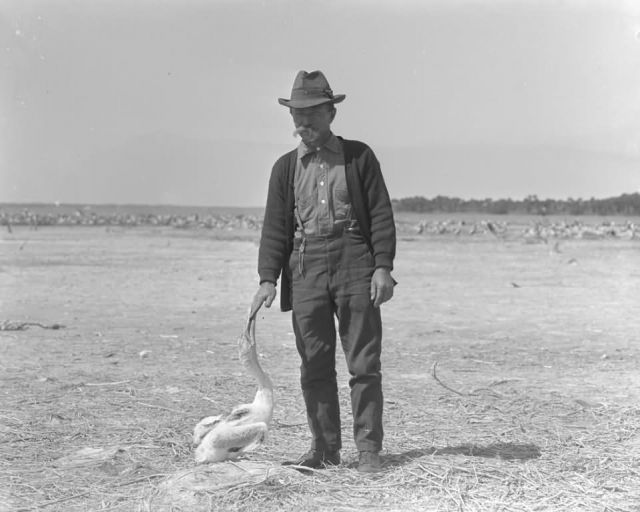Paul Kroegel (1864 - 1948) wore a deceptively high hat, carried a menacing 10-gauge shotgun, and interpreted the boundaries of newly-created Pelican Island National Wildlife Refuge loosely in a one-man effort to save the brown pelican from extinction on the Atlantic Coast. Yet Kroegel, a German immigrant, boatbuilder, and farmer who settled in the vicinity of Sebastian, Florida, in the 1880’s never lost his abiding passion for the ungainly waterbirds. Kroegel, a small man, was appointed the first (and only) private warden for the sanctuary in 1903, and at first he had no legal authority to protect the birds. Yet he did not let the absence of regulation stop him, often intervening by sailing between Pelican Island and offshore gunners and placing his body between poachers and pelicans. Hired for $1 a month (supplemented by $7 a month from various Audubon societies) to be warden of the island once it was declared a Federal refuge on March 14, 1903, Kroegel erected a large ââ¬ÅU.S. Reservation ââ¬â Keep Offââ¬Â sign (later removed when it scared off sensitive birds) and planted an oversized U.S. flag on a 50-foot flagpole to remind all comers of the islandââ¬â¢s newly-protected status. A brutal hurricane in 1910 prompted many pelicans to leave the 4-acre island; the temporary absence of birds and a thrifty post-World War I Federal Government caused Kroegel to be retired in 1919, earning him two ââ¬Åfirstsââ¬Â in the history of the National Wildlife Refuge System ââ¬â first Federal game warden ... and first Fish and Wildlife Service employee forced into mandatory retirement. Kroegel didnââ¬â¢t let the diminution in his status keep him from protecting his birds; he remained in the area as an unofficial caretaker until his death in 1948. Scanned in 2001 from the original glass plates from 1907.
Hide.










